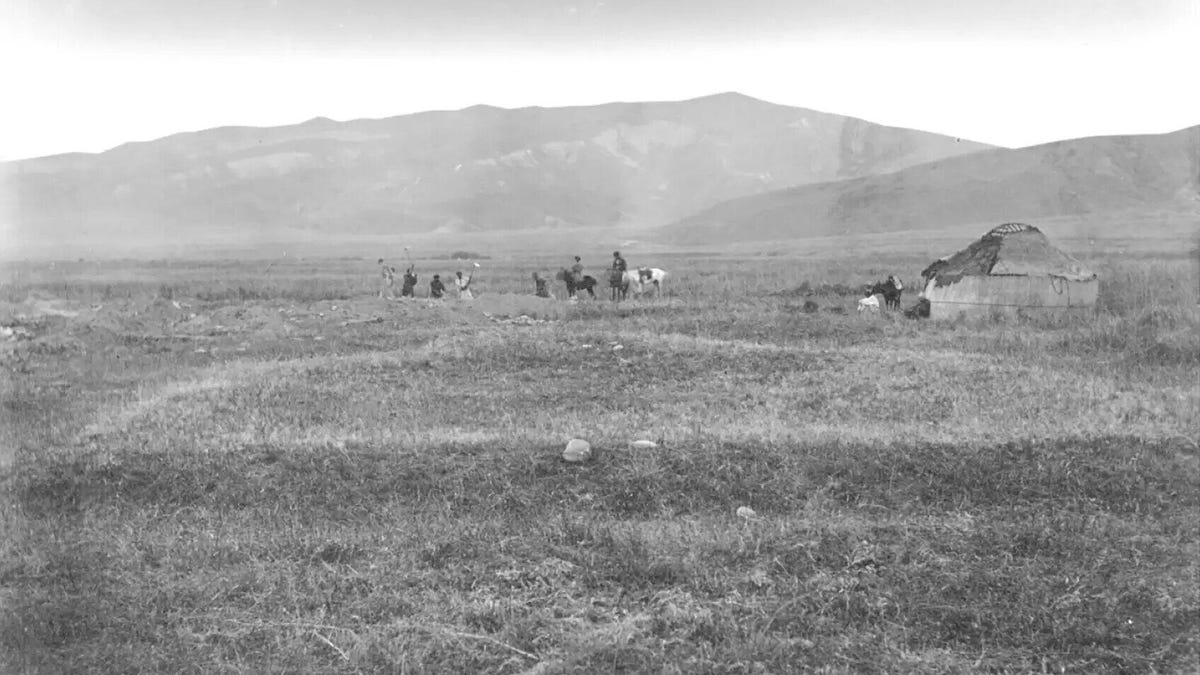Mystery of the Black Death: DNA Analysis Reveals Major Clue

Excavated in the late 1800s, graves in Kyrgyzstan yielded remains that led much later to conclusions about the black death.
What's happening
Scientists used DNA analysis to discover where the black death originated.
Why it matters
For centuries historians have debated the bubonic plague's origins, due to scattered archeological proof and a lack of concrete evidence. These findings may settle the debate.
October 1347 -- a fleet of 12 ships docked at the Sicilian port of Messina. Aboard these ships, most sailors were dead. And the few left alive on what would later be known as "death ships" were covered in black boils oozing blood, exhibited high fevers and suffered among an army of stray rats scurrying within each vessel.
These sailors had contracted the bubonic plague, and were surrounded by the rodents who infected them.
It was a terrifying situation, which went down in history as Europe's first exposure to the miserable disease -- also called the black death. But prior to this moment, 20 million people are said to have already died from the disease in Asia. And at the end of it all, reports show the black death claimed the lives of up to 200 million people worldwide in the span of just a few years.
For centuries, one massive mystery was left unsolved: Where, exactly, did the black death begin?
According to new research, published Wednesday in the journal Nature, we may finally have an answer -- and it's thanks to a rather ominous source.
Scientists say they've figured out the black death's origin by studying remnants of ancient DNA from human remains excavated in the 1800s from centuries-old graves. These tombs were accompanied by "pestilence" inscriptions, or etchings that say the person buried was the victim of an epidemic.
"We could finally show that the epidemic mentioned on the tombstones was indeed caused by plague," Phil Slavin, one of the study's senior authors and a historian at the University of Stirling in the United Kingdom, said in a statement.
Most importantly for the origin puzzle, the graves were located in a region known as Lake Issyk Kul, now part of northern Kyrgyzstan, and were the final resting places of people who lived in the year 1338.
Per the researchers, the people buried here are the oldest-known victims of the black death.
Plague inscription from the Chu-Valley region in Kyrgyzstan where the graves were located. The inscription, in part, is translated as follows: "This is the tomb of the believer Sanmaq. [He] died of pestilence."
Tracing an ancient tragedy
Slavin and fellow scientists wanted to uncover the plague's place of origin because, despite the fact that decades had passed since the illness' eradication, historians couldn't settle on a final answer.
"There were all kinds of hypotheses in the literature. And it was not really known where it exactly came from," Johannes Krause, a palaeogeneticist at the Max Planck Institute for Evolutionary Anthropology in Leipzig, Germany, who co-led the study, told Nature.
A popular theory, for instance, was that the black death's roots were in China. But the hypothesis lacked evidence and was also contrary to "the most debated archaeological evidence potentially associated with the pandemic's initiation," the new study said, which is derived "from cemeteries located near Lake Issyk-Kul of modern-day Kyrgyzstan."
So, zeroing in on that archaeological evidence, here's how the new study team came to its conclusions. To decode the black death's beginnings, DNA analysis was key.
Like all epidemic diseases, the black death is associated with a disease strain. In this case, the strains at hand are all derived from a bacterium called Yersinia pestis. And, like with COVID-19, there were different types of bubonic plague strains that grew out of the original one, akin to the modern day pandemic's alpha, delta and omicron variants.
View of the Tian Shan mountains.
But in the way we have evidence of the original COVID-19 strain stemming from Wuhan, China, there has to have been a starting point for the black death's original strain. That's what Slavin and his team were after.
In analyzing the DNA of bodies buried in what's now northern Kyrgyzstan and comparing the results to the plague's genome, "we found the Black Death's source strain and we even know its exact date [meaning the year 1338]", Maria Spyrou, lead author of the study and researcher at the University of Tübingen, said in a statement.
In essence, it's a groundbreaking finding that more or less negates the widely held belief that the plague's origins track back to China. A question going forward, however, is where even this newly discovered 1338 Black Death strain emanated from. That's because the plague began not with humans but with rodents.
"We found that modern strains most closely related to the ancient strain are today found in plague reservoirs around the Tian Shan mountains, so very close to where the ancient strain was found," Krause said. "This points to an origin of Black Death's ancestor in Central Asia."

